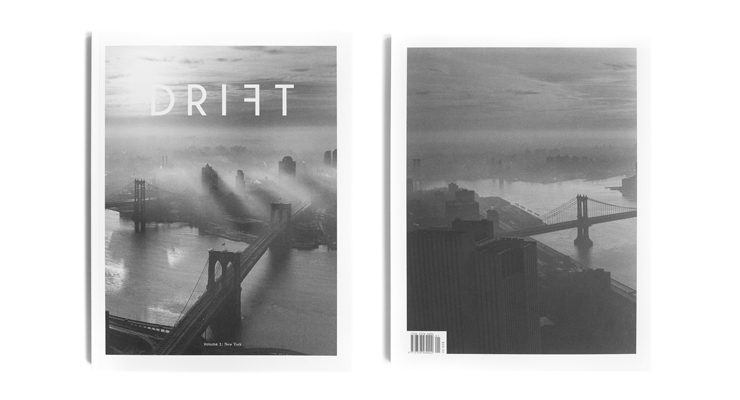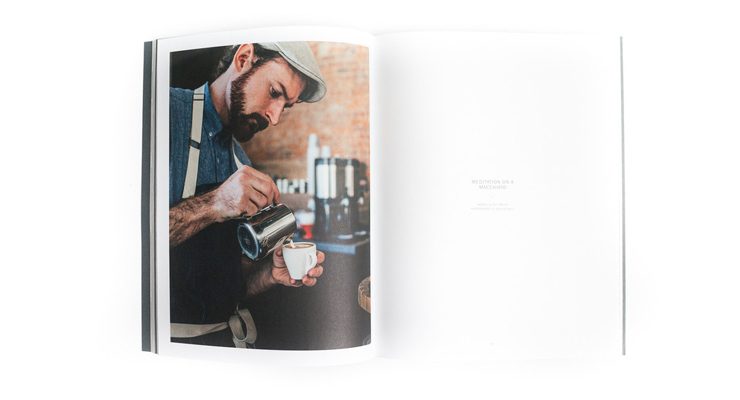 Drift Magazine is a new print magazine about coffee, launched this winter with a handsome first issue devoted to documenting New York City’s coffee culture through photos, articles and stories. For their second issue, the New York-based team plans to capture the exploding Tokyo coffee scene.
Drift Magazine is a new print magazine about coffee, launched this winter with a handsome first issue devoted to documenting New York City’s coffee culture through photos, articles and stories. For their second issue, the New York-based team plans to capture the exploding Tokyo coffee scene.
We talked to Drift co-founder Adam Goldberg, proprietor of the travel and gastronomy wunderfeed that is @ALifeWorthEating, to hear more about the project.
Sprudge: You have a lot of connections in the food writing world. Is this mainly where you’re looking for writers and photographers, or are you going afield?
AG: I wish the food and coffee worlds had more overlap. The interest in specialty coffee is exploding but the food world has been slow to adapt. It’s amazing to me that some of the most interesting and highly rated restaurants in the world—ones that go to extraordinary lengths to obtain the highest quality ingredients—serve old, flavorless, often-instant or capsule coffee. For the first issue my sister, Elyssa, who is Drift’s executive editor, helped to find great writers who were enthusiastic about writing about coffee, even if they never had the chance to cover it before. We’re looking for contributors like that, who approach coffee as a lens through which we can learn more about people and the cities they live in.
Your magazine is presented ad-free, but it’s beautifully printed with a lot of content, which couldn’t have been cheap. What’s the funding and business idea behind Drift?
Drift’s creative director, Daniela Velasco, also my girlfriend, and I are paying for this out of pocket right now. Printing is not cheap, that’s for sure. Our cover price is $24 and we will be lucky if we break even. That’s just what it costs to use the paper and ink we like. We’re doing what we can to offset the printing cost without detracting from the reading experience of the magazine; that’s really important to us. I hope with future prints, as readership grows a bit, the magazine will sustain itself. That will let us do really cool things, like work with more photographers and writers to cover cities that aren’t necessarily easy to get to. We probably should have a better business plan, but we’re doing this for fun.
Who is your ideal reader for Drift?
We’re writing for people who like coffee, and who want to get to know a city through unconventional means. We realized that when we were travelling somewhere new, the first thing we did was pull up a list of the specialty coffee shops. Through that, we got to know a city.
What sorts of places do you want to see retailing Drift?
We’ve been doing well at specialty coffee shops that are set up to sell books and magazines, but we also sell Drift at bookstores all over the world, in areas where readers enjoy coffee and travel.
There are multiple other Drift Magazines—a Dutch tabloid, a Swedish auto enthusiast monthly, etc. What’s it mean to you to be among these Drifters?
I like our name, specifically within the context of coffee. I never liked to make day-by-day itineraries when travelling, and I think the relaxed process of getting to know a city through its coffee is captured in the name Drift. To be honest, I don’t think too many readers will confuse Swedish car racing with coffee.
Your opening issue includes a 10 Best Espresso Bars in NYC list. Why make the choice to do a definitive ranking in your first issue? What sorts of criteria did you, or the writer, use to make the evaluations?
I’ve been publishing a best espresso list on my blog, A Life Worth Eating, for a few years now so this isn’t something completely new. The coffee scene is growing so quickly in New York that I wanted a way to capture a snapshot of the city’s best coffee. I think espresso is a great way to do that because it’s so difficult to make well. The list is by no means scientifically accurate, but I drink a lot of coffee—particularly espresso—and these are the places that stand out to me.
Your next issue is on coffee in Tokyo. What have been the challenges in exploring Tokyo’s coffee culture as an American publication? What have been the successes?
We think the best thing we can do as an American publication is let those familiar with—and part of—coffee culture in Tokyo, or anywhere else we go, tell their own stories. Coffee in Japan is fascinating. This is a culture that has embraced tea for thousands of years and has flown under the radar for decades as a coffee hub, even though it’s long been one of the world’s largest importers of coffee. Tokyo’s specialty coffee scene is exploding, but even before the recent growth of specialty coffee, Japan had kissatens, their version of a coffee counter at a diner.
What’s your background with coffee like? Why a coffee magazine?
I’m probably under-qualified for this; I’m really just an enthusiastic coffee drinker. I have an engineering background, so I’ve always been fascinated by the scientific aspect of brewing. I think most people can make a great cup of coffee once or twice; the real challenge is consistency. Investing in a VST changed my life, being able to have objective numbers that represented what I had been tasting. You should see the coffee shelf in my apartment, it looks like a laboratory. But what’s interesting about coffee is the broad range of enthusiasts—drinkers who use a refractometer and others who are happy with a loosely measured cup of instant coffee. Coffee is an intimate part of so many peoples’ routines that it offers a unique perspective into their lives, and we wanted to explore that.
If you were to do another genre-focused publication, what do you think you’d want to focus on?
One magazine is more than enough for right now!
Who are your greatest inspirations & sources of ideas for Drift?
I live in New York’s Financial District and pass by the coffee carts every morning. The lines can get pretty long. The coffee isn’t anything revolutionary, but starting the day with a hot cup of drip is such an intimate part of New Yorkers’ lives that it seemed like a fresh way to learn more about a city and its people. Our hope is that by learning about a city’s coffee scene readers will ultimately learn about its people.
Learn more and get yourself a copy of Drift at driftmag.com
The post The Story Behind Drift, A New Coffee Magazine appeared first on Sprudge.

